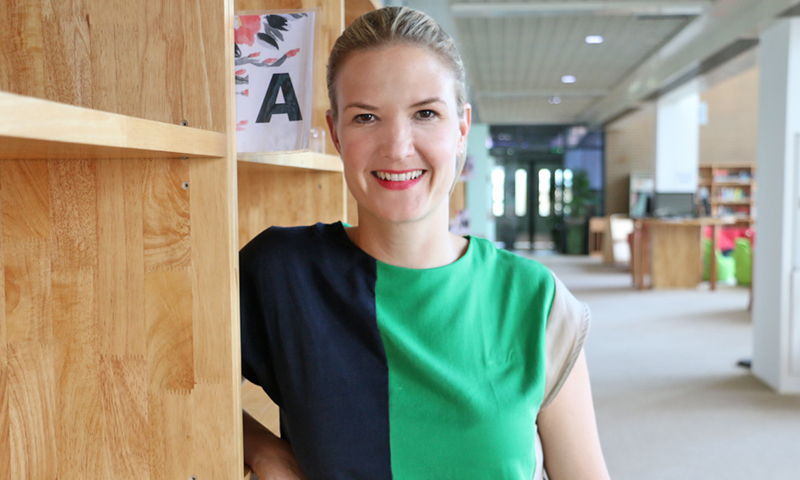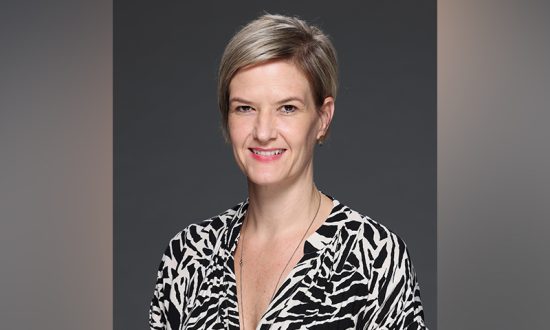Joanne Anderson currently serves as the Head of Design and Technology at Dulwich College Beijing where her role is to lead and develop the SE21 Program in collaboration with the Director of Innovation, Computer Science and STEM Teachers and Innovation Coaches. She enjoys leading students through the process of designing solutions to current and future problems to contribute toward meeting the sustainable development goals.
She is a Design Thinking Practitioner, Concept Based Inquiry Teacher, Adobe Campus Leader, Common Sense Media Ambassador and First Lego League Coach. She brings experience from her role as an ICT Integrator for Apple EDU South Africa (EMEA), Project Manager for Pearson Education South Africa and Digital and Product Design Lead at Shen Wai International School, Shenzhen where she developed their Design Program. When she is not infusing teaching and learning with technology, she can be found enjoying the great outdoors and travelling the world.
In an exclusive interview with K12 Digest, Joanne talks about the role and benefits of inquiry-based learning in education, her professional background, what sets Dulwich College Beijing’s SE21 program apart from others, and a lot more. Following are the excerpts from the interview.
According to you, what is the role of inquiry-based learning in education and what are some of its key benefits?
In my experience, teaching MYP Design, inquiry-based learning expands and enriches learning to include the interests of all learners’. It’s role in education is to develop critical thinkers and active, engaged learners.
Please brief us about your background: education and career.
My undergraduate degree is in Media Studies and Visual Communication and my MA is in Executive Change Leadership in International Education. I have a range of experience in the Education sector. I have worked as an editorial project manager for Pearson, brand ambassador for Apple in Education, consulting program manager for a small business development project for women across Southern Africa and as a Design Teacher and Technology Lead in the International Schools sector.
Can you tell us about Dulwich College Beijing’s (DCB) SE21 program and what sets it apart from others?
Our SE21 program includes bespoke STEM and Future Tech courses which bring together the best of IGCSE and IB. We collaborate with industry experts and mentors to offer self-paced, project-based learning experiences for our students. SE21 is usually a hive of activity, offering extra-curricular activities like F1 in Schools, FLL, FRC and Deep Racer. The space was custom- designed and is world class.

What are some of the initiatives that have been implemented by you for the development of DCB’s SE21 Program?
Our Future Tech Course will give students the opportunity to focus on solving future problems. I think it’s important to open students up to the idea of anticipating problems and an opportunity to try and solve them. I’ve introduced participation in global competitions in our STEM course and SDG Innovation Labs. These invite students to solve problems related to the sustainable development goals competitively. Two key pillars for my tenure are sustainability and innovation. I’d like us to include circular and generative design principles in everything we do and to integrate new technologies at each stage of the design cycle so that students’ experience as designers is as authentic as possible.
In your current role, what type of challenges do you face? How do you tackle them?
We are recovering from the Covid pandemic. Being online for the better part of three years has impacted participation in STEM activities. It is somewhat challenging relaunching the programs and upskilling and orientating the student body.
What are the most important recommendations you would like to drive home for administrators and leaders at other institutions regarding the integration of technology and education?
I think reframing Technology conferences as being for all staff and not just for the Technology department is an important shift for conferences and schools to make.
What lessons have you learned about organizational change and where do you see the SE21 program headed over the next five years?
I think ‘managing – in’ the right amount of change at the right time and for the right reasons is important in our context. Maintaining balance is important. I see the program growing from strength to strength, maintaining its core courses but developing them to factor in new technologies and pedagogical approaches.
Who is your role model in life and why?
There are so many incredible humans to look up to on this planet. I can’t name just one, but I will say that I aspire to do more for our planet. I admire all individuals and organisations working to combat the negative impact we have on the environment, and I would like to be involved in a more direct and measurable way.
What are some of your greatest achievements in your career to date? What makes them special?
In my previous school, I led the curriculum development and resourcing of the Design Program and PYP Makerspace. We developed both from scratch. This was special because I worked with the skills, knowledge, and expertise in my team to create something unique that is being carried forward.
Enlighten us about your future plans.
I currently have no future plans, but I’m interested in moving to Europe or the UAE to pursue a similar role in the near future.




